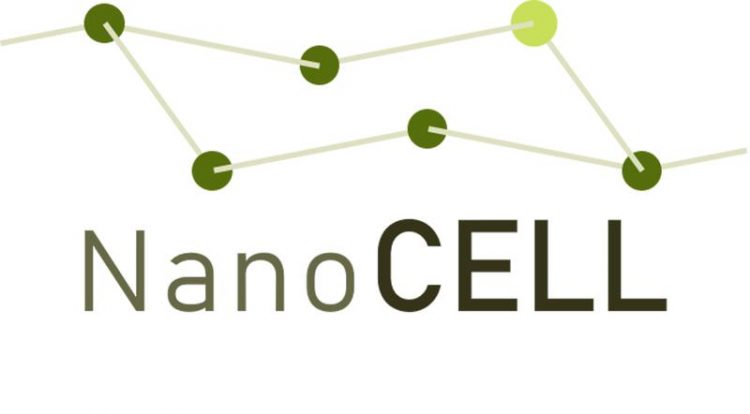Nanoscale cellulose: An alternative to plastics? – NanoCELL for environmentally friendly packaging

The BMBF project „NanoCELL“ investigates the characteristics of nanocellulose along its life cycle for reliable risk assessment and safe use in environmentally friendly packaging materials.
Cellulose, a natural carbohydrate, is the most abundant organic substance on earth. Nanocellulose is extracted from renewable resources such as wood or cotton and is therefore a raw material in the field of bioeconomy.
As nanocellulose has very good barrier properties for oxygen and mineral oils, it can therefore replace barrier materials from fossil raw materials.
The biodegradable material nanocellulose offers a promising approach to replace poorly degradable materials, thereby reducing plastic waste and thus opening up a possible way out of the microplastic problem in the environment.
In addition, several studies indicate that nanocellulose is more compatible with other polymers and papers and is therefore less problematic in the recycling process and leads to a higher recycling quality than commonly used materials.
Currently, there are large gaps in knowledge regarding the interaction of other nano-/microstructures made of cellulose, such as nanocellulose crystals and nanocellulose fibres.
The toxicity of these materials depends strongly on their shape and size, surface chemistry and the quality of the manufacturing process (impurities). Preliminary results indicate low dermal and oral toxicity, but are inconsistent in terms of toxicity after inhalation.
BMBF-project »NanoCELL« should provide sound knowledge
Against this background, the BMBF-funded joint project “NanoCELL” aims to fabricate nanocellulose materials and to develop standardized analysis methods and strategies to analyse nanocellulose along its life cycle.
Among other things, the performance of nanocellulose-reinforced films and coatings is to be investigated in terms of their barrier properties against oxygen and mineral oils.
In addition, standardized analysis strategies will be developed, from sample preparation to the physico-chemical characterization of nanocellulose in complex matrices such as saliva or intestinal fluid.
A further aspect is the toxicological evaluation of nanocellulose. For example, the transport of nanocellulose across the gastrointestinal barrier is simulated and the uptake of nanocellulose into human cells as well as the chemical degradation as a function of particle size and other particle properties is experimentally investigated.
In parallel, intelligent test strategies based on novel in vitro and in silico methods are being developed to predict material risks.
Fraunhofer IBMT expertise in nanotechnology and -toxicology
The main task of the Fraunhofer Institute for Biomedical Engineering IBMT in this joint project is to investigate the toxicological effects of nanocellulose using newly developed cell models, e.g. for the gastrointestinal tract and the lung, together with chip-based high-throughput processes.
With its decade-long experience in the field of nanotechnology and nanotoxicology, the Fraunhofer IBMT develops and optimizes sensitive in vitro and ex vivo systems for the determination of human toxicological effects of crystalline nanocellulose (CNC) after oral and pulmonary absorption into the organism.
The work focuses on the transport of CNC across the biological barriers “lung” and “gastrointestinal tract” as well as the accumulation in tissue and CNC-induced toxic effects at the cellular level. Thus, in vitro multilayer tissue models for the simulation of the gastrointestinal tract and the lung are built and used for transport studies.
Furthermore, a biological characterization of the CNC-treated tissue models will be carried out to investigate the hazard after inhalation or oral uptake of the CNC.
Project Funding: 03XP0196
Duration: 01.03.2019-28.02.2022
Project coordinator:
Dr. Florian Meier, Postnova Analytics GmbH, Landsberg am Lech
Project partners (Germany):
Fraunhofer-Institut für Biomedizinische Technik IBMT, Sulzbach
Microscopy Services Dähnhardt GmbH, Flintbek
VITROCELL Systems GmbH, Waldkirch
Fraunhofer-Institut für Verfahrenstechnik und Verpackung IVV, Freising
Technische Universität München (TUM), München, Lehrstuhl für Systemverfahrenstechnik
Universität des Saarlands, Saarbrücken, Lehrstuhl für Pharmazie
Associated partners (Germany):
Umweltbundesamt (UBA), Dessau-Roßlau
Infiana Germany GmbH & Co. KG, Forchheim
GRÜNPERGA Papier GmbH, Grünhainichen
Contact at the Fraunhofer IBMT:
Dr. Yvonne Kohl
Group Manager Nanotoxicology
Fraunhofer IBMT
Phone: +49 (0) 6897 9071 256
E-Mail: yvonne.kohl@ibmt.fraunhofer.de
https://www.ibmt.fraunhofer.de
https://nanopartikel.info/projekte/laufende-projekte/nanocell
Media Contact
All latest news from the category: Materials Sciences
Materials management deals with the research, development, manufacturing and processing of raw and industrial materials. Key aspects here are biological and medical issues, which play an increasingly important role in this field.
innovations-report offers in-depth articles related to the development and application of materials and the structure and properties of new materials.
Newest articles

First-of-its-kind study uses remote sensing to monitor plastic debris in rivers and lakes
Remote sensing creates a cost-effective solution to monitoring plastic pollution. A first-of-its-kind study from researchers at the University of Minnesota Twin Cities shows how remote sensing can help monitor and…

Laser-based artificial neuron mimics nerve cell functions at lightning speed
With a processing speed a billion times faster than nature, chip-based laser neuron could help advance AI tasks such as pattern recognition and sequence prediction. Researchers have developed a laser-based…

Optimising the processing of plastic waste
Just one look in the yellow bin reveals a colourful jumble of different types of plastic. However, the purer and more uniform plastic waste is, the easier it is to…



